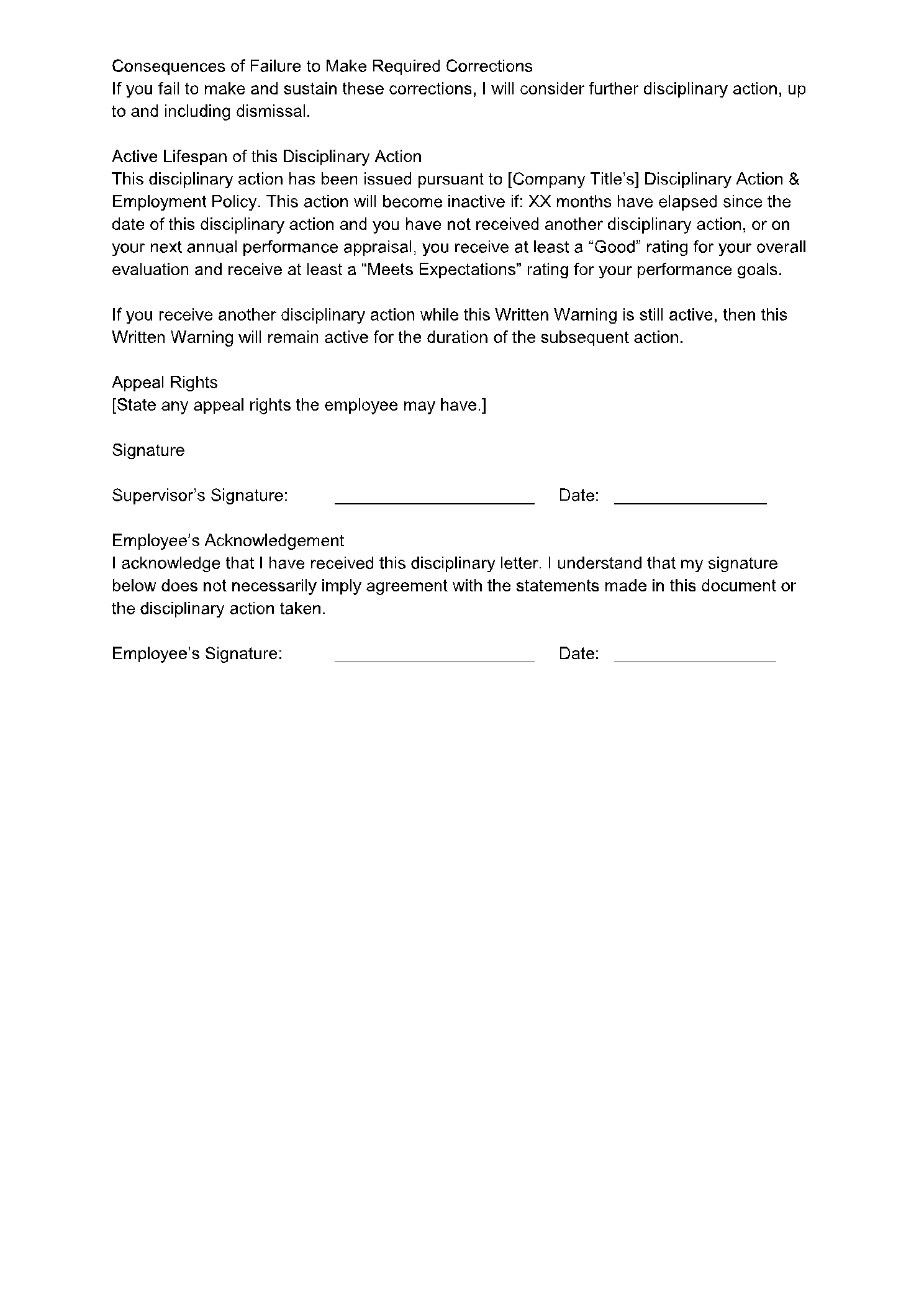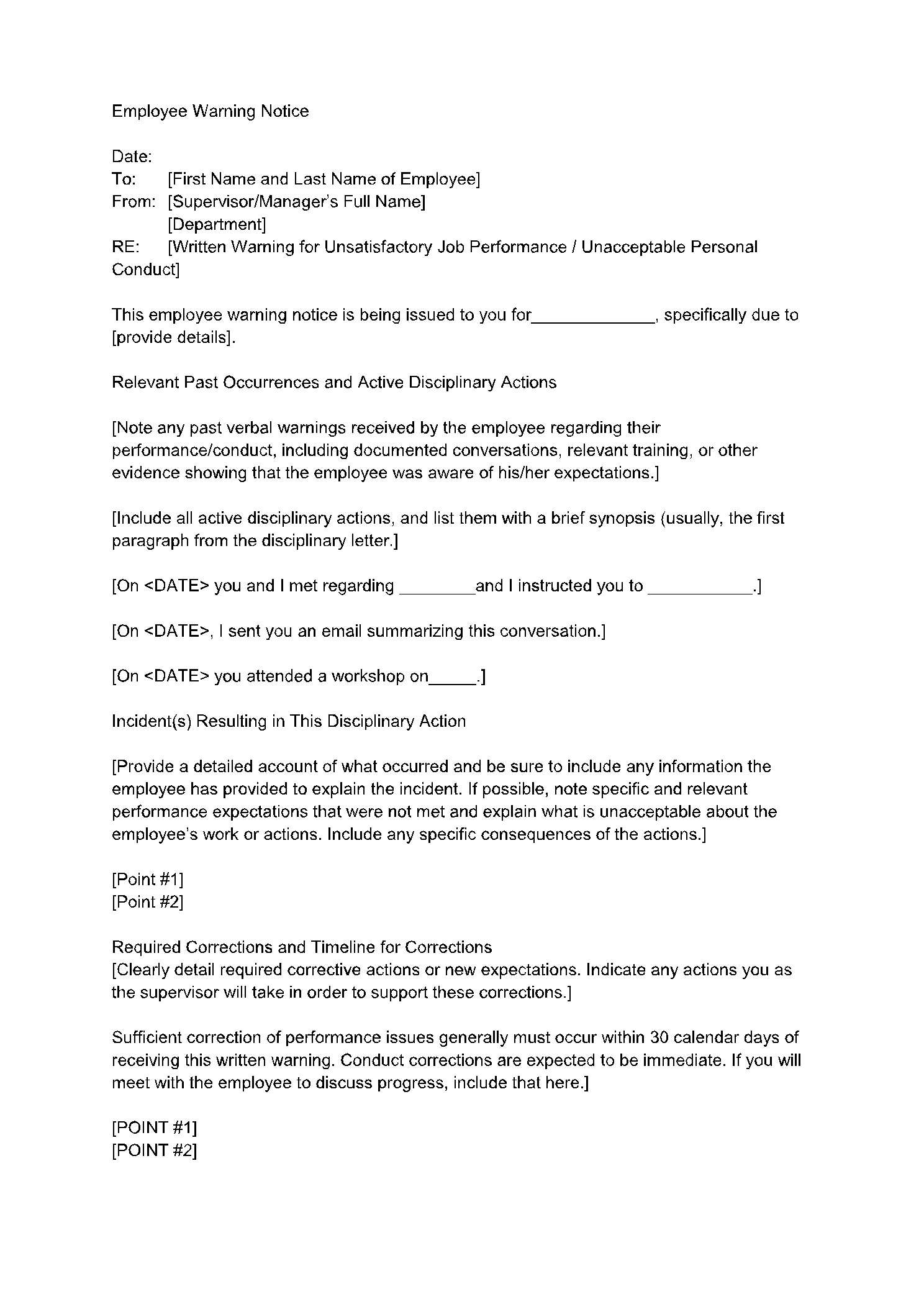Now and then, some employees in the organization, knowingly or unknowingly, break the rule of engagement as laid down by the book of codes. To deal with the situation, the organization usually calls in the employee and gives him/her a verbal notice.
The employees are also told where they did wrong, how they can correct it, and ways to ensure that nothing of the sorts happen in the future. However, if the infarction keeps happening, again and again, the organization issues an employee warning notice laying out all the processes and steps to be followed.
What Is an Employee Warning Notice?
Simply stating employee warning notice(s) are issued by an organization to address and correct the inappropriate behavior of an employee in the workplace. It works in a similar way to the complaint form and disciplinary action form. Mostly it is issued as a reminder, and detailed note after a face to face meeting with the employee has happened with reference to the issue at hand. Thus, the notice provides the said employee enough time and opportunity to course correct.
The notice lays down in detail about the wrongful conduct along with the remedial measures to be adopted to ensure it does not happen again. If the degree of the misconduct is severe, the notice also mentions the appropriate punishment/penalization that has been doled out to the said employee.
What to Include in an Employee Warning Notice?
A well-written employee warning notice must always contain the following:
Details about the employee, including his/her proper first and last name, to remove any ambiguity.
- The exact date of the issuance of the employee warning notice.
- Complete information provided by the manager under which the employee is stationed.
- All the details regarding the issue for which the notice is being given.
- A detailed list of rules/policies that the employee has failed to comply with.
- Any leniency shown by the company in case of prior infarction towards the employee to help him/her feel accommodated.
- Expectations of the organization from the employee.
- Employee’s signature and acceptance of the behavior for which the notice is being given and agreement on the steps to be taken for making amends.
- Signature of the reporting manager or the issuing authority.
- A follow-up meeting date to access the progress of the employee.
The copies of the notice thus generated are handed over to the human resource department for record-keeping and to the employee as well.
Why is an Employee Warning Notice Important?
Most employees and employers consider written warning templates as negative. So, they resort to dealing with issues verbally. However, the practice can be unfair with several loopholes.
Suppose either of the parties involved decides to take the matter to court, then, in the absence of a written document, it will become a matter of one person’s words against another. This is where issuing a written employee warning notice becomes very important.
Since the notice documents everything in detail, both the parties are aware of what they agree to. In case of any unfair treatment, the matter can then be taken to courts for resolution.
When and How to Give an Employee Warning Notice?
An employee written warning can be given out for any of the following reasons:
- A dip in the employee’s performance or work quality
- In case of inappropriate conduct in the office premises.
- Disrespectful/demeaning behavior towards other employees
- Illegal activity
- Behaviour leading to damage to the organization’s image
- Continued absenteeism
- Violations of the organization’s rules and policies
- Undermining the authorities
Mostly the employee warning letters are drafted by the HR professionals after consulting with the reporting manager of the concerned employee. They will also check the notice against all the existing laws and employee rights to ensure that the notice does not get undermined by any violation or lack thereof. Before delivering the notice, make sure the following things are in place:
- The organization has a standardized discipline policy/guidebook in place for all its employees
- Before delivering the notice, the employee must be given a verbal warning. If necessary, a meeting must be arranged between the employee, HR personnel, and the reporting manager
- The issue must be investigated from all the angles to avoid any legal malpractice and to have all the details in place
- The notice must be delivered as soon as possible after the incident has occurred
- It must be clearly stated that the notice is official and must be regarded as such
- The employee must sign and acknowledge that s/he has received the notice
FAQs
-
Why is an employee warning notice required?
Under labor laws, the organizations are required to provide proof of any or all disciplinary action taken against an employee. Having a well-documented notice comes in handy at the time.
-
Can the notice be signed at or during work?
Yes, the notice can be signed by the employee during working hours. However, if the employee is not in agreement with the content of the notice, s/he can refuse to sign.
-
What if the employee refuses to sign the notice?
If an employee does not sign the notice, the manager must mention the same in the form. The reason why the employee refused to sign must also be mentioned clearly.
-
Is giving a verbal warning mandatory?
This completely depends on the particular organization’s guidelines for disciplinary actions. The guidelines must include in detail how many verbal or written warnings will be issued before the employee is terminated.

